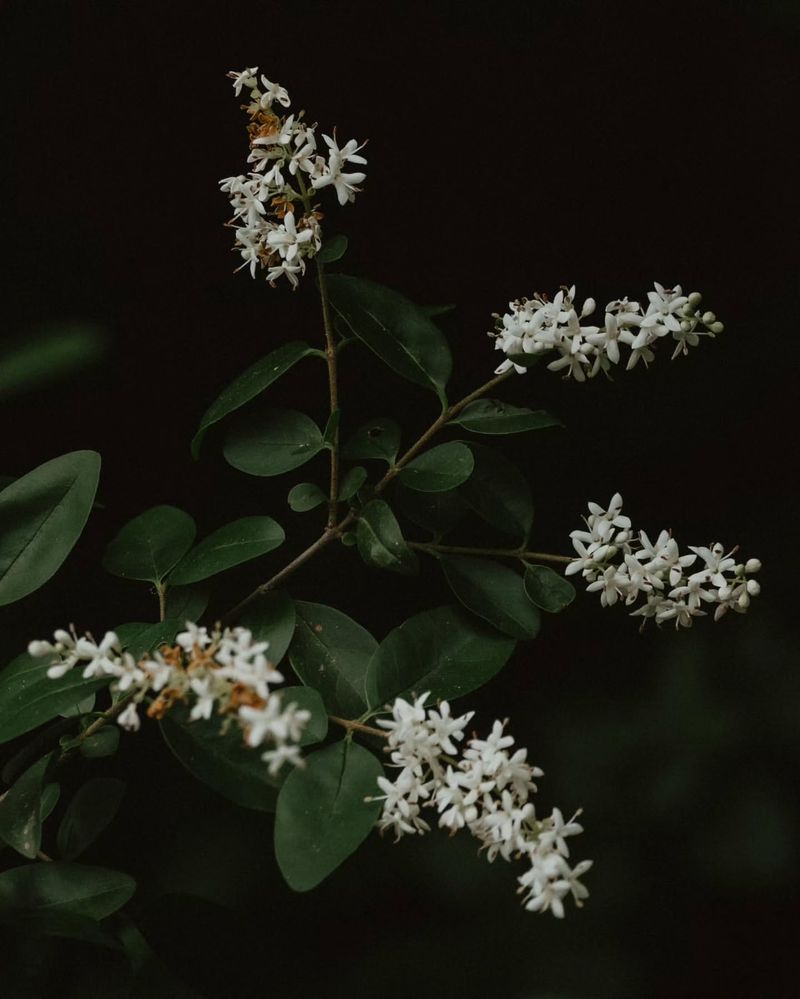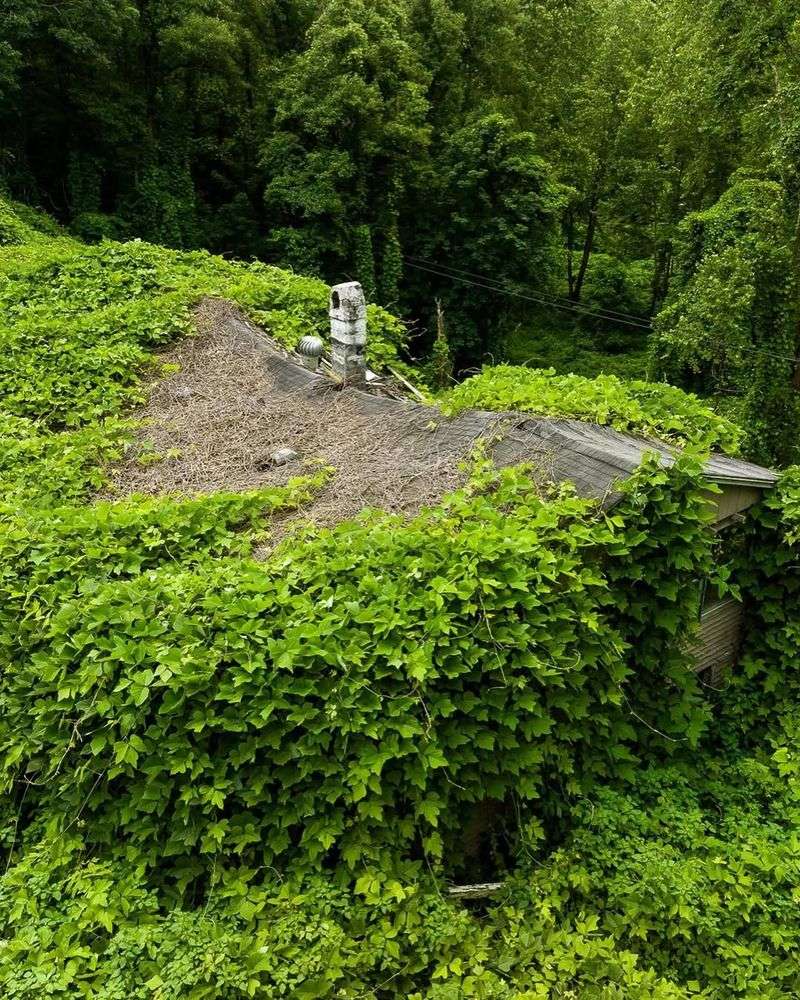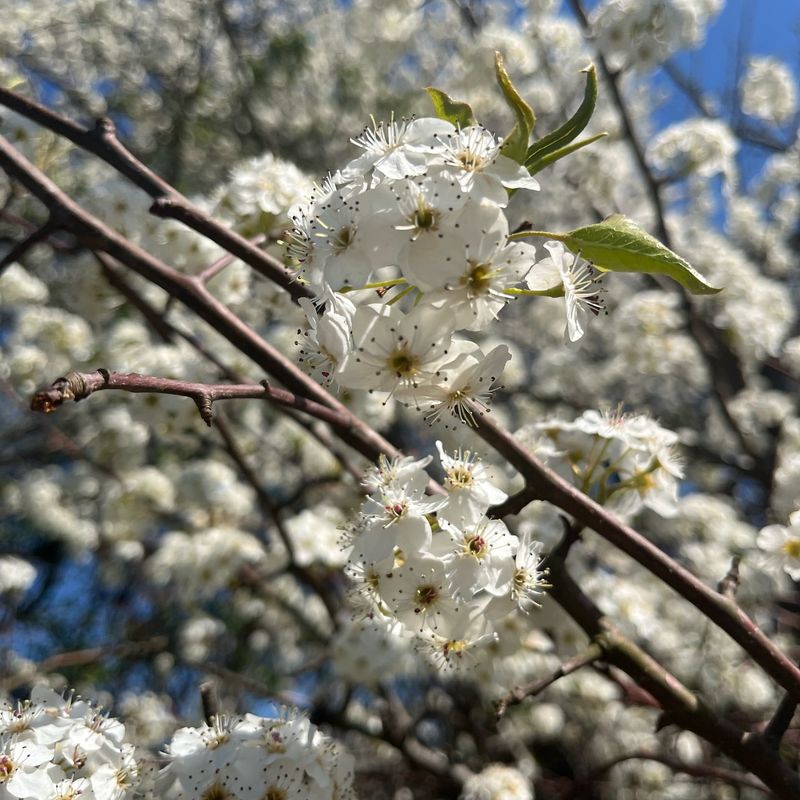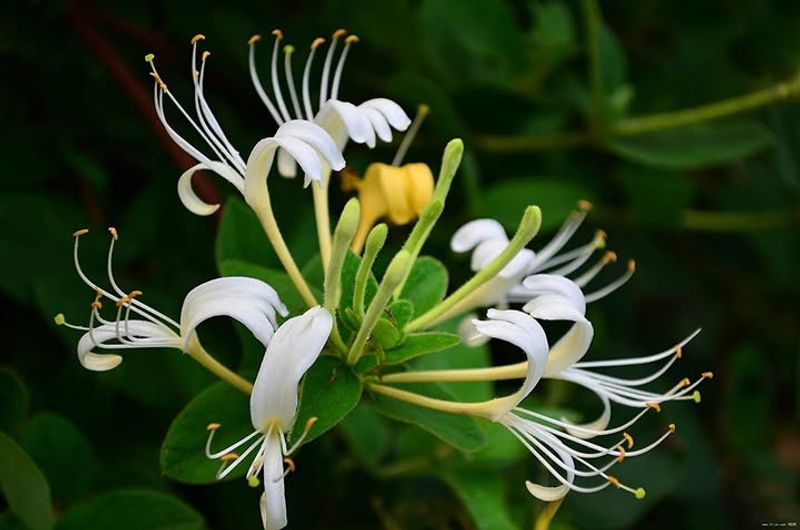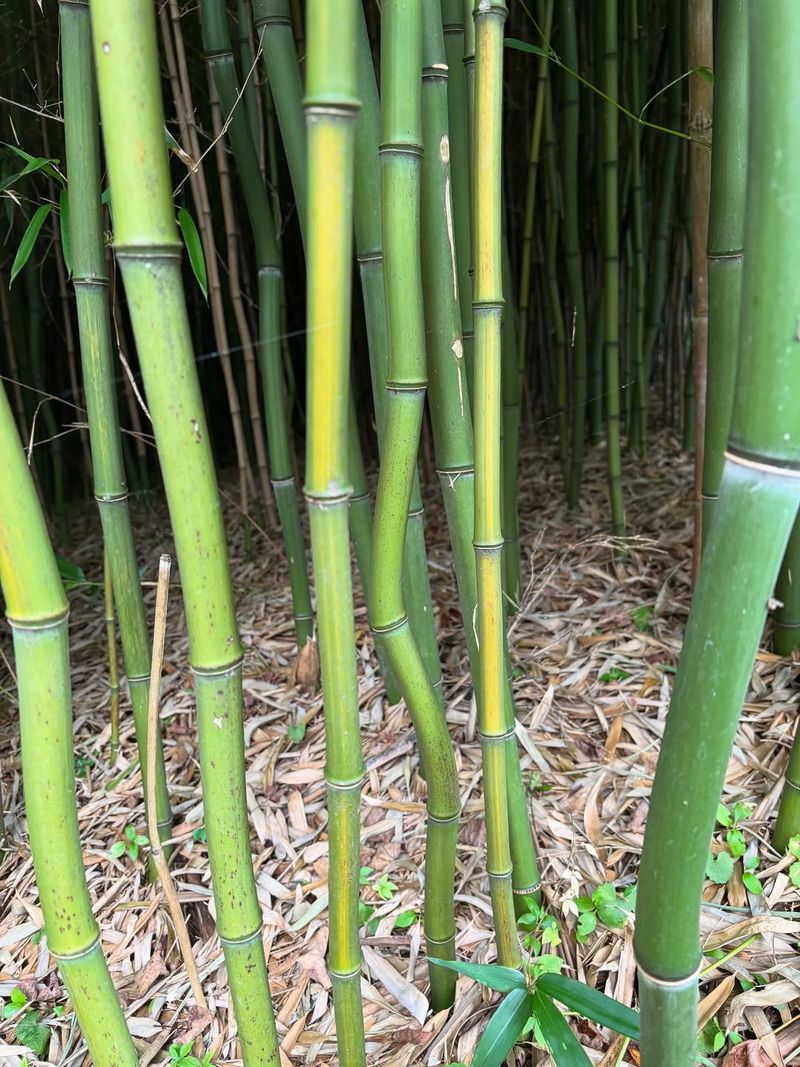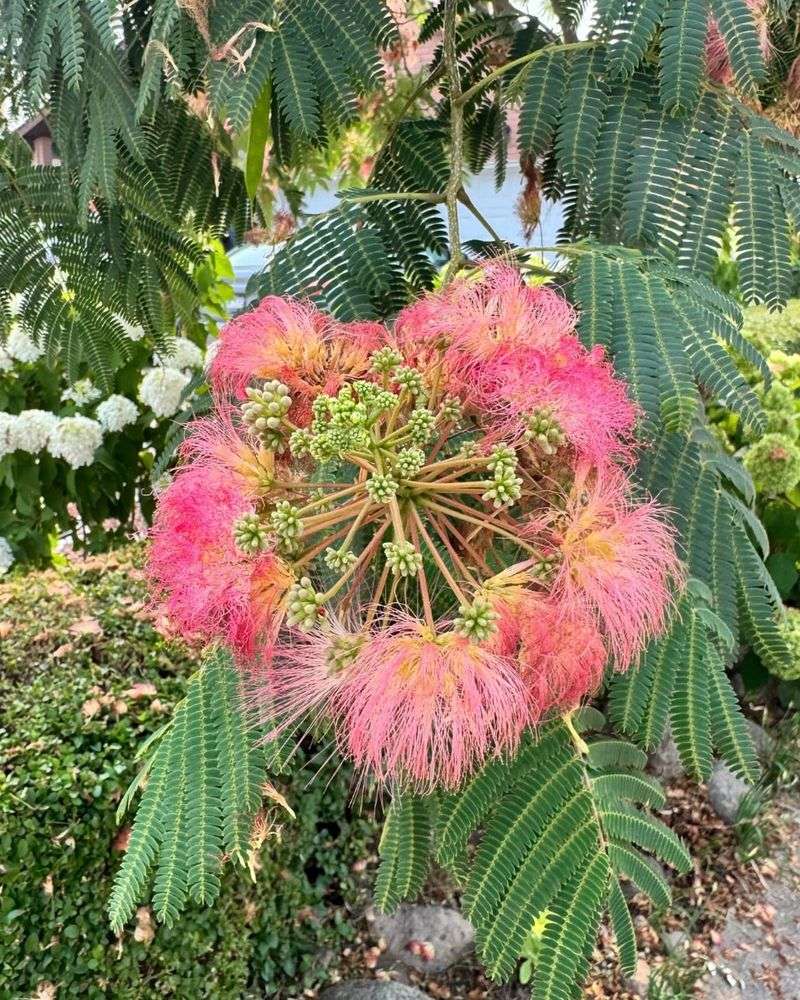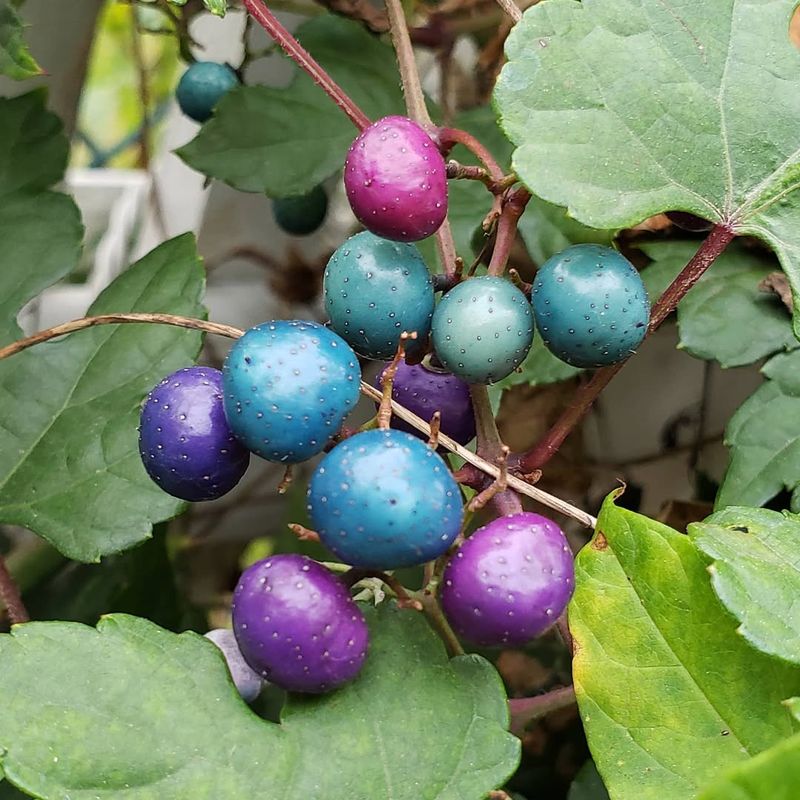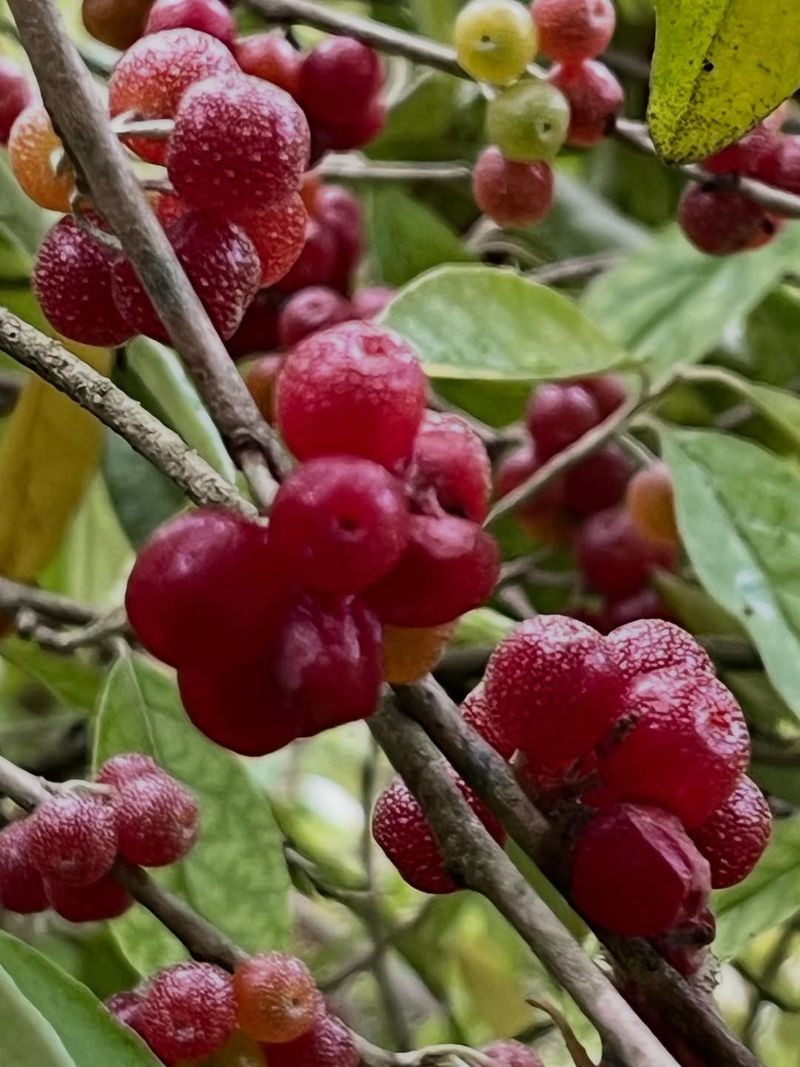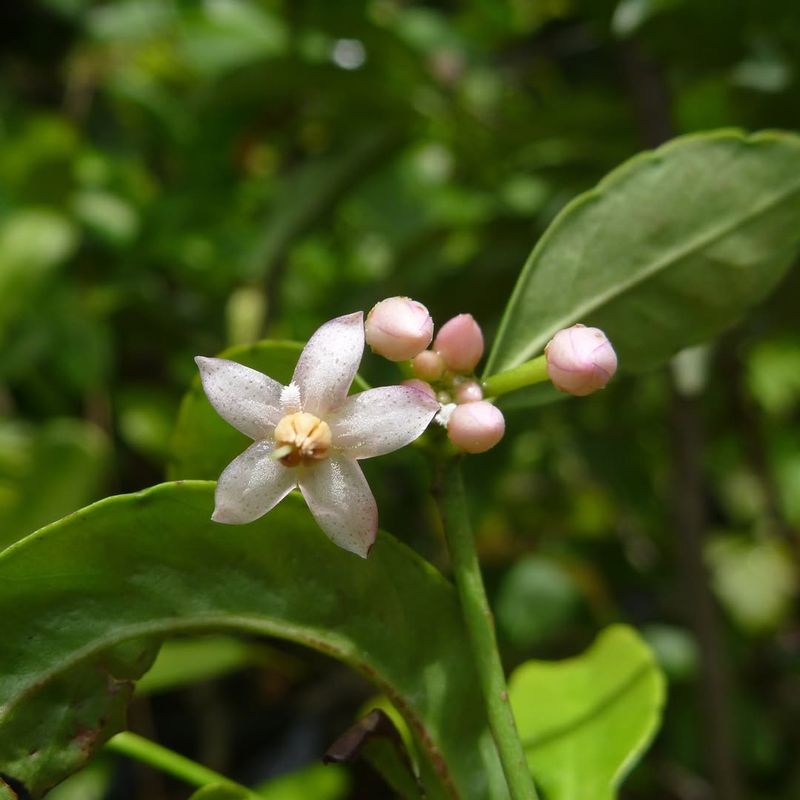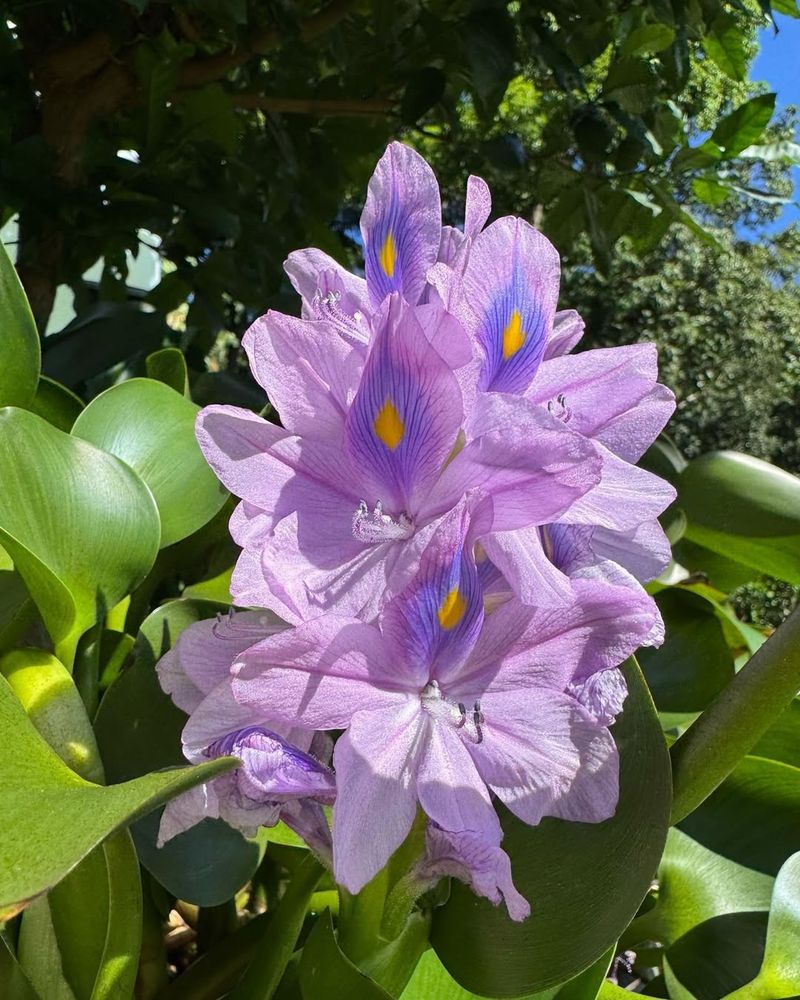Georgia homeowners might soon face new rules about what they can grow in their yards. Some popular plants have become serious problems because they spread too fast and harm native wildlife.
Understanding which plants could be banned helps you make smarter choices for your garden while protecting Georgia’s natural environment.
1. English Ivy
Climbing walls and trees might look charming, but English ivy creates serious headaches for Georgia ecosystems. Once established, this vine smothers native plants and prevents young trees from growing properly.
Birds spread its seeds everywhere, making it nearly impossible to control once it escapes your yard. The thick mats it forms also provide perfect hiding spots for rats and other unwanted pests.
Property owners spend thousands trying to remove it from buildings and forests each year.
2. Chinese Privet
Walk through any Georgia forest and you’ll likely spot this aggressive shrub taking over. Chinese privet forms dense thickets that block sunlight from reaching the forest floor, destroying wildflowers and young trees.
Its rapid growth means it outcompetes everything around it for water and nutrients. Wildlife suffers too, since the berries provide little nutritional value compared to native plants.
Removing established stands requires years of persistent effort and often chemical treatments.
3. Kudzu
Known as “the vine that ate the South,” kudzu grows up to a foot per day during summer months. Originally brought from Japan to control erosion, it now smothers millions of acres across Georgia.
Entire forests disappear under its blanket of leaves, destroying trees by blocking their sunlight. Power companies spend millions cutting it away from utility lines and poles.
Even small patches in your yard can quickly spiral out of control and invade neighboring properties.
4. Bradford Pear
Those beautiful white flowers in spring come with a hidden cost that many homeowners regret later. Bradford pears have weak branch structures that split apart during storms, causing property damage and expensive removal bills.
Their seedlings pop up everywhere, crowding out native trees in forests and parks. The flowers also emit an unpleasant odor that smells remarkably like rotting fish.
Many Georgia cities already discourage planting them due to these multiple problems.
5. Japanese Honeysuckle
Sweet-smelling blooms make this vine seem like a garden treasure, but appearances deceive. Japanese honeysuckle strangles native plants by wrapping around them and stealing their sunlight and water.
It spreads through underground roots and seeds, making eradication extremely difficult once established. Forest managers consider it one of the worst invasive species threatening Georgia’s woodlands.
The vine can completely change forest composition by preventing native seedlings from maturing into trees.
6. Wisteria (Chinese and Japanese)
Gorgeous purple flower clusters make wisteria a landscaping favorite, but non-native varieties cause major environmental damage. These aggressive vines can snap tree branches with their powerful twining stems and heavy weight.
They grow so vigorously that they topple fences and damage building foundations. Native wisteria exists as a better alternative that won’t destroy your property or nearby forests.
Removing established plants requires cutting the roots repeatedly over several years to destroy them completely.
7. Bamboo (Running Varieties)
Privacy screens sound great until your bamboo invades the neighbor’s yard and cracks their driveway. Running bamboo sends underground shoots called rhizomes that can travel 20 feet or more from the parent plant.
These shoots pop up through asphalt, concrete, and even building foundations, causing thousands in damage. Once established, removing bamboo becomes a nightmare requiring excavation and persistent chemical treatment.
Many homeowner associations now ban it entirely to prevent property disputes and costly removal projects.
8. Mimosa Tree
Fluffy pink blooms and delicate leaves give mimosa trees an exotic appearance that attracts many gardeners. Unfortunately, they produce thousands of seeds that sprout everywhere, creating dense thickets along roadsides and in forests.
The trees grow quickly but have brittle wood that breaks easily during storms. They also suffer from diseases that leave dead trees standing as eyesores.
Native flowering trees provide better options without the invasive tendencies and maintenance headaches mimosas create.
9. Burning Bush
Spectacular fall color makes burning bush a popular landscaping choice for Georgia homeowners seeking seasonal interest. Birds love the berries and spread seeds into natural areas where the shrubs crowd out native plants.
Young burning bush plants pop up in forests and parks, altering ecosystems that wildlife depends on for food. Several states have already banned sales due to its invasive behavior.
Native alternatives like Virginia sweetspire offer beautiful fall colors without threatening Georgia’s natural habitats and biodiversity.
10. Nandina (Heavenly Bamboo)
Commonly called heavenly bamboo despite not being bamboo at all, nandina fills Georgia landscapes with year-round color. The pretty red berries contain cyanide compounds that poison cedar waxwings and other birds that eat them.
Seeds spread through bird droppings, establishing new plants in forests where they displace native berry-producing shrubs. Wildlife depends on native berries for proper nutrition, making nandina a poor substitute.
Several mass bird tragical endings have been directly linked to nandina berry consumption during winter months.
11. Porcelain Berry
Berries that change from white to purple create a stunning display that catches every gardener’s eye. Porcelain berry vines grow with incredible speed, covering everything in their path including valuable native plants.
The colorful fruits contain seeds that birds distribute widely, leading to new infestations in natural areas. It outcompetes native grape vines that provide important food for wildlife.
Forest edges and disturbed areas become completely dominated by this aggressive vine if left unchecked for even one season.
12. Autumn Olive
Silver-backed leaves and nitrogen-fixing roots made autumn olive seem like the perfect landscaping solution decades ago. Fast-forward to today, and it dominates roadsides and old fields throughout Georgia, forming impenetrable thickets.
Each shrub produces thousands of berries that birds eagerly consume and spread far and wide. The dense stands prevent native plants from establishing and reduce habitat quality for wildlife.
Removing established plants proves difficult since cut stumps resprout vigorously unless treated with herbicides immediately.
13. Coral Ardisia
Shade-tolerant and covered with bright red berries, coral ardisia seems perfect for Georgia’s darker garden spots. Birds spread the seeds into forests where the plants form dense carpets that prevent tree seedlings from growing.
Native wildflowers disappear when coral ardisia takes over, simplifying forest ecosystems and reducing biodiversity. The plants thrive in the shade where most other invasives struggle to grow.
Florida already bans sales of this pest, and Georgia may follow suit to protect remaining natural forest understories.
14. Water Hyacinth
Beautiful purple flowers floating on your pond seem harmless until they completely cover the water surface. Water hyacinth doubles its population every two weeks during warm weather, blocking sunlight and destroying fish and other aquatic life.
The dense mats prevent boating and swimming while providing breeding grounds for mosquitoes. Removing them requires constant effort since tiny plant fragments regrow into new infestations.
Georgia already restricts this plant, and stricter bans may soon follow to protect lakes and rivers statewide.



